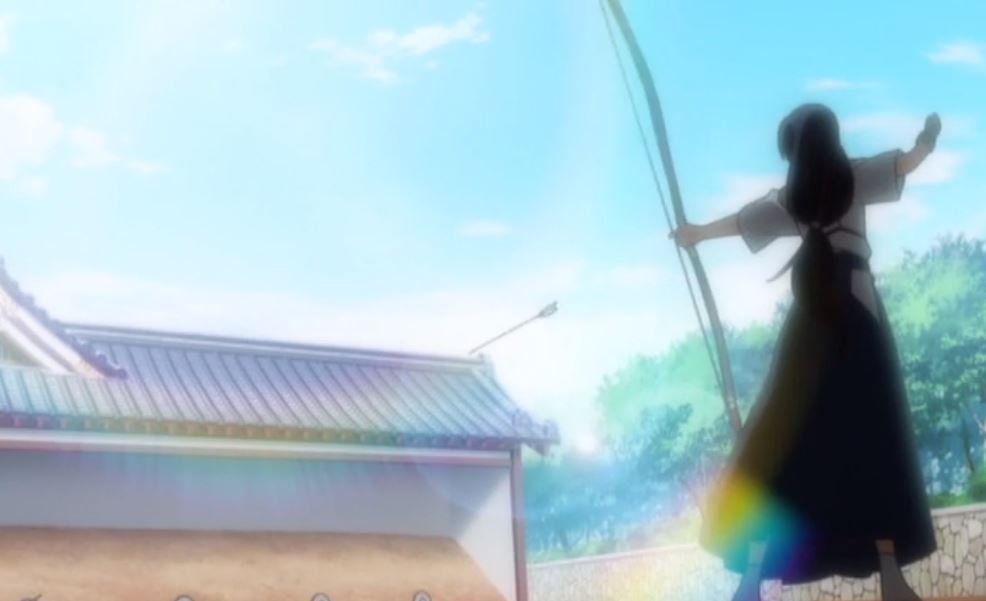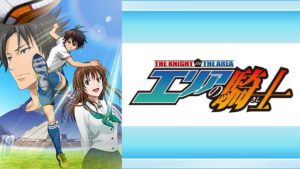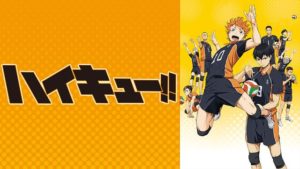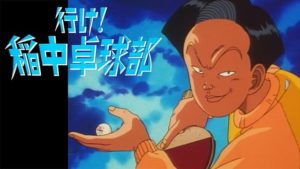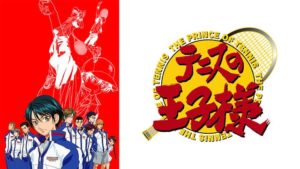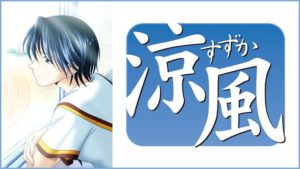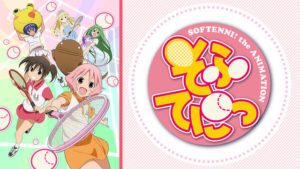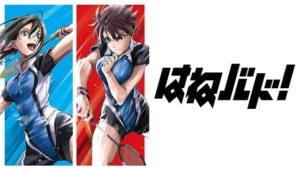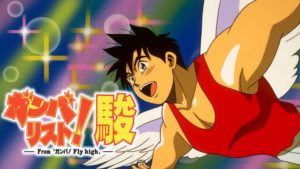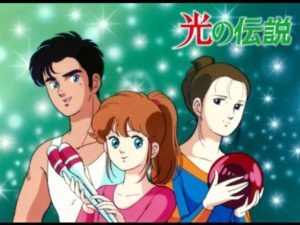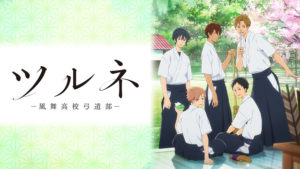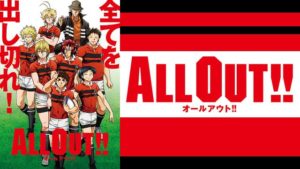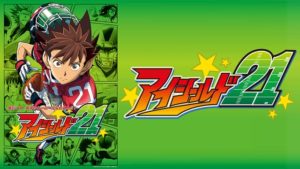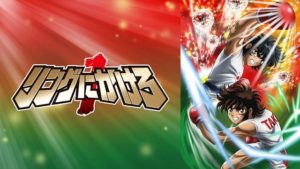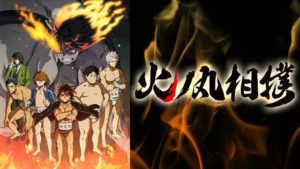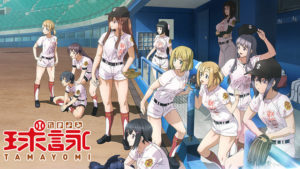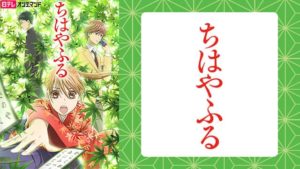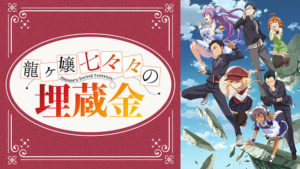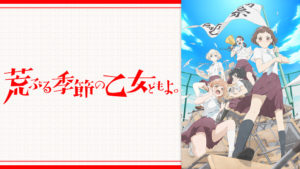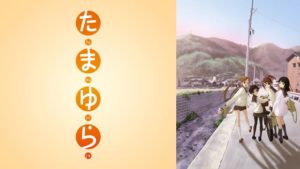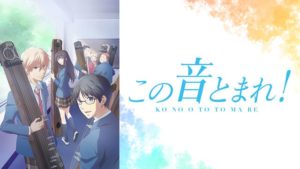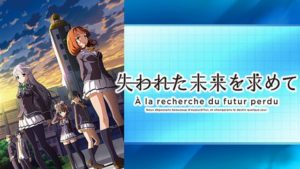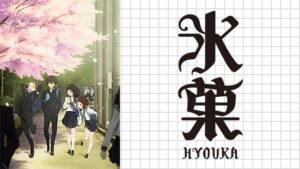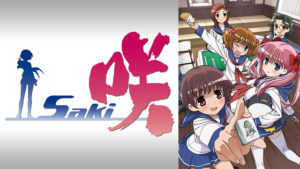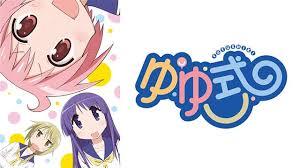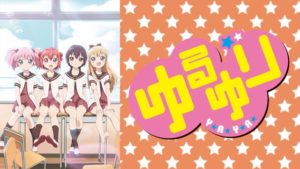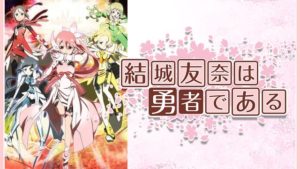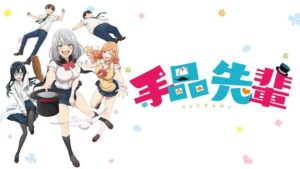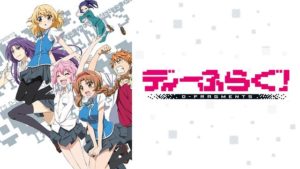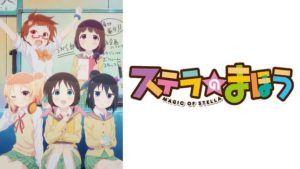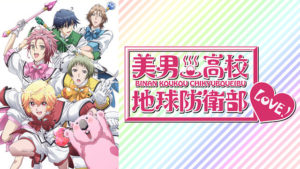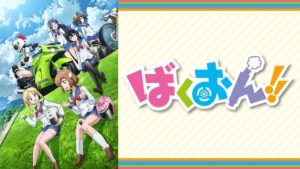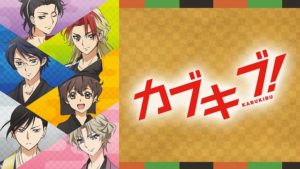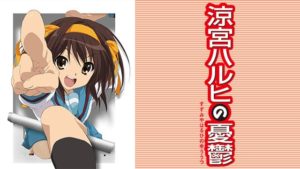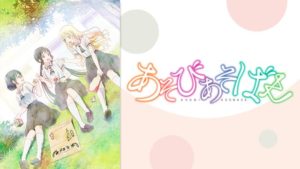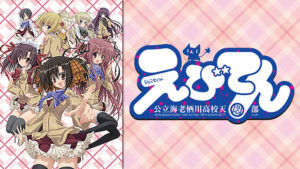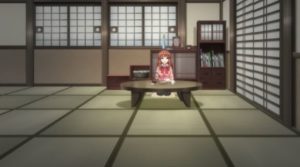The Reality of Japanese School Club Activities in School Club Anime
(C)2013 プロジェクトラブライブ!
Introduction
You must have many questions watching Japanese school club anime. You might wonder “Isn’t there any advisor in Japanese school club?”, “Are students able to run the clubs as they like?”, or “Is it easy to start new club activities?” Here, we would like to explain the reality of club activities in Japanese high schools, junior high schools, and universities. We assure that you become much familiar with Japanese school club after you read this article. First, let’s see what kind of Japanese school club actually exist and check if there are those school club anime.
1. Japanese School Club List
Japanese schools have such a wide variety of club activities and they are broadly categorized into athletic and cultural. First, let us show you a list of school club with school club anime themed on those club activities. You would find many old-time anime in this list and many of them became lauded all over the world. The thing is, anime provided opportunities for Japanese people to learn about foreign sports which they were unfamiliar with at the time, and to try them. Of course, today in Japan, it is not uncommon for a sport to become popular by the influence of anime. This is a good Japanese tradition which has not changed over the years. Besides, there was not much entertainment in Japan back then except old-time anime.
Athletic School Clubs
- Baseball
“Ace of Diamond”
©寺嶋裕二・講談社/「ダイヤのA」製作委員会・テレビ東京
- Soccer
“The Knight in the Area”
©伊賀大晃・月山可也・講談社/テレビ朝日・シンエイ動画
- Volleyball
“Haikyu!!”
©古舘春一/集英社・「ハイキュー!!」製作委員会・MBS
- Table tennis
“The Ping Pong Club”
©古谷 実/講談社・キティフィルム・TBS
- Tennis
“The Prince of Tennis”
©許斐剛 TK WORKS/集英社・テレビ東京・NAS
- Track and field
“Suzuka”
©瀬尾公治・講談社/マーベラスAQL
- Basketball
“Ro-Kyu-Bu!”
(C)蒼山サグ/アスキー・メディアワークス/TEAM RO-KYU-BU!
- Soft Tennis
“Softenni”
©あづち涼/マッグガーデン/「そふてにっ」製作委員会
- Badminton
“Hanebado!”
©2018 濱田浩輔・講談社/「はねバド!」製作委員会
- Gymnastics
“Ganba! Fly High”
(C)森末慎二・菊田洋之/小学館・読売テレビ・サンライズ
- Rhythmic gymnastics
“Hikari no Densetsu”
(C)麻生いずみ/集英社・タツノコプロ
- Swimming
“Free!”
©おおじこうじ・京都アニメーション/岩鳶高校水泳部
- Kyudo
“Tsurune”
©綾野ことこ・京都アニメーション/ツルネ製作委員会
- Kendo
“Bamboo Blade”
(c)土塚理弘・五十嵐あぐり/スクウェアエニックス・バンブーブレードパートナーズ
- Rugby
“All Out!!”
©雨瀬シオリ・講談社/神高ラグビー部
- American football
“Eyeshield 21”
©米スタジオ・ビレッジスタジオ/集英社・テレビ東京・NAS
- Boxing
“Ring ni Kakero”
©車田正美/集英社・東映アニメーション・マーベラスエンターテイメント
- Cycling
“Yowamushi Pedal”
(C)渡辺航(週刊少年チャンピオン)/弱虫ペダル製作委員会
- Sumo wrestling
“Hinomaru Sumo”
©川田/集英社・「火ノ丸相撲」製作委員会
- Women’s hardball
“Tamayomi”
©マウンテンプクイチ・芳文社/新越谷高校女子野球部
- Competitive Karuta
“Chihayafuru”
©末次由紀/講談社・VAP・NTV
- Shooting
“Rifle is Beautiful”
©サルミアッキ/集英社・千鳥高校射撃部
- Airsoft
“Stella Women’s Academy, High School Division Class C³”
©月眠/ステラ女学院保護者会
- Adventure
“Nanana’s Buried Treasure”
(C)2014鳳乃一真・eb!刊/七重島総合警備保障
- Climbing
“Iwa Kakeru! Climbing Girls”
©石坂リューダイ・サイコミ/花宮女子クライミング部応援団
There are other athletic club activities existing in Japanese schools as below. You might not find them in anime but might find them in manga.
- Cheerleading
- Equestrian
- Field hockey
- Fishing
- Cheering Squad
- Dance
- Handball
- Squash
- Skiing
- Mountaineering
- Golf
Cultural School Clubs
There are many types of athletic club activities, but there are also many literary clubs. Let’s take a look.
- Art
“This Art Club Has a Problem!”
©2016 いみぎむる/KADOKAWA アスキー・メディアワークス刊/この美製作委員会
- Brass band
“Sound! Euphonium”
©武田綾乃・宝島社/『響け!』製作委員会
- Literature
“O Maidens in Your Savage Season”
© 岡田麿里・絵本奈央・講談社/荒乙製作委員会
- Photography
“Tamayura”
(C)佐藤順一・TYA/たまゆら製作委員会
- Geology
“Asteroid in Love”
©Quro・芳文社/星咲高校地学部
- Newspaper
“Jinsei
© 川岸殴魚・小学館/人生製作委員会
- Chorus/Vocal
“Tari Tari”
©tari tari project
- Band (Pop music)
“K-On!”
©かきふらい・芳文社/桜高軽音部
- Koto music
“Kono Oto Tomare! Sounds of Life”
©アミュー/集英社・この音とまれ!製作委員会
- Astronomy
“In Search of the Lost Future”
Ⓒアトリエハイキー/内浜学園天文学会
- Drama
“Hinako Note”
© 三月・KADOKAWA刊/ひなこのーと製作委員会
- Classics
“Hyouka”
©米澤穂信・角川書店/神山高校古典部OB会
- Robotics
“Robotics;Notes”
©チュウタネロボ部
- Mahjong
“Saki”
©小林 立/スクウェアエニックス・清澄高校麻雀部
- Information Processing
“Yuyushiki”
©三上小又・芳文社/ゆゆ式情報処理部
There are other cultural club activities that exist in Japanese schools as below. You might not find them in anime but might find them in manga.
- Tea ceremony
- Flower arrangement
- Shogi (Japanese Chess)
- Calligraphy
- Cooking
- Broadcasting
Others School Clubs which do not Exist but Appear in Anime.
- Neighbors Club
“Haganai”
(C)2011 平坂読・株式会社KADOKAWA メディアファクトリー刊/製作委員会は友達が少ない
- Breakwater Club(Fishing club)
“Diary of Our Days at the Breakwater”
©小坂泰之(秋田書店)/海野高校ていぼう部
- School Service Club
“My Youth Romantic Comedy Is Wrong As I Expected”
©渡 航、小学館/やはりこの製作委員会はまちがっている。
- School Living Club
“SCHOOL-LIVE!”
© Nitroplus/海法紀光・千葉サドル・芳文社/がっこうぐらし!製作委員会
- Food Research Club
“Love, Election & Chocolate”
©sprite/fairys・恋チョコ製作委員会
- Amusement Club
“YuruYuri”
(c)なもり/一迅社・七森中ごらく部
- GJ Club
“GJ Club”
©新木伸・あるや/小学館・GJ部保護者会
- Hero Club
“Yuki Yuna is a Hero”
(C)2014 Project 2H
- Magic Club
“Magical Senpai”
©アズ・講談社/手品先輩製作委員会
- Game Creation Club
“D-Frag!”
©春野友矢/株式会社KADOKAWA メディアファクトリー刊/ディーふらぐ!製作委員会
- SNS Club
“Magic of Stella”
©くろば・U・芳文社/ステラのまほう製作委員会
- Earth Defense Club・Conquest Club
“Cute High Earth Defense Club LOVE!”
(C)馬谷くらり/黒玉湯
- Bike Club
“Bakuon!!”
©おりもとみまな(ヤングチャンピオン烈)/ばくおん!!製作委員会
- Going-Home Club
“Chronicles of the Going Home Club”
© くろは/スクウェアエニックス・「帰宅部活動記録」製作委員会
We call Going Home Club for those who are not participating at school club. But “Going-Home Club” in this anime does not exist in real life)
- Kabuki Club
“Kabukibu!”
©榎田ユウリ/KADOKAWA/カブキブ推進委員会 Original Character Design ©CLAMP・ST
- SOS Brigade
“The Melancholy of Haruhi Suzumiya”
(c)2006 谷川 流・いとうのいぢ/SOS団 (c)2007,2008,2009 谷川 流・いとうのいぢ/SOS団
- Pastimers Club
“Asobi Asobase”
©涼川りん・白泉社/「あそびあそばせ」製作委員会
- Astronomy club
“Ebiten: Kōritsu Ebisugawa Kōkō Tenmonbu”
(c)2012 すかぢ・狗神煌/角川書店/海老栖川高校天悶部
- Campus Support Club (Sket-dan)
“SKET DANCE”
©篠原健太/集英社・開盟学園生活支援部・テレビ東京
Let us add a note about the “Going Home Club”. It is not an official club activity as though the word “club” is attached. Students who do not participate in club activities and return home immediately after school are called “Going Home Club”. It is used to indicate that you don’t belong to any club at school but you are still a part of the group of people who do not join any club. It is rather a neutral word that describes such status. “Going Home Club” in the ” Chronicles of the Going Home Club” currently does not exist in Japan.
1.1. Popular School Club
At 2017, popular school club activities were athletic. At 2019, they changed as listed below due to the influence of Japanese anime and idols.
No. 1 Band (Pop music) Club
No. 2 Dance club
No. 3 Drama club
No. 4 Brass band Club
No. 5 Volleyball Club
The reason for the rank is the fact that teenager is easily influenced by manga, anime, and drama. Also, Japanese anime attractively depicts not only athletic club but also cultural club activities. In the heyday of Japanese anime at 1980s, soccer and basketball became popular because of “Captain Tsubasa” and “Slam Dunk” accordingly. Kendo Club did liven up when the serialization of “Rurouni Kenshin” began in 1994. “The Prince of Tennis” started in 1999 and tennis gained popularity. “K-On!” started in 2009 and school band club came in. And volleyball club took on when the serialization of “Haikyuu!!” began in 2012. It is clear that anime has contributed greatly to Japanese school club in real life. The increase in the number of club members contribute the club’s growth nationwide.
“K-ON! The Movie”
©かきふらい・芳文社/桜高軽音部
2. What is School Club Activities?
Now we know that Japanese school club activities are of great variety. Next, let us explain why there is such a wide variety of club activities.
2.1. Overview
The Ministry of Education, Culture, Sports, Science and Technology (The MEXT) divides high school educational activities into “curricular” and “extracurricular”. Club activities fall under the “extracurricular” category. This means that it is not compulsory for schools to establish and operate club activities. Therefore, the content, the rules, and the dedication level of club activities vary from school to school. By the way, morning and evening homerooms, cleaning duty, and day-duty also fall under “extracurricular”, and they are called “special activities”.
“Special activities” is not left to each school’s discretion solely. The educational implication of club activities is summarized in the “Education Ministry Guidelines”. Each school’s goals, the teaching process, and the allocation of teaching hours for special activities are based on the annual teaching plan. The annual teaching plan is made by the school, but it must conform to the “Education Ministry Guidelines”. Schools are not able to control all over club activities.
“Education Ministry Guidelines” instructs schools for the operation of club activities to “make use of the school’s originality and ingenuity” while taking into consideration students’ development stage and the reality of local community. This is a very interesting point. We can say that “special activities” of “extracurricular” are important for high schools, which are not compulsory education, in order to present their characteristic. Each school operates club activities in accordance with broad rules which The MEXT sets up.
“High school curriculum guidelines for extracurricular activities prepared by the Ministry of Education, Culture, Sports, Science and Technology”
The link is in Japanese, so please use the translation function of your browser.
2.2. Differences of Club Activities in Junior High School, High school, and University
Next, let’s take a look at the differences of club activities based on age. The teaching policy of club activities based on age actually varies on details. The purpose and goal of club activities at junior high schools, which are compulsory education, are described as follows.
“The purpose and goal of club activities is to encourage students who share the same interest to bring together beyond the boundaries of class and grade voluntarily and independently. Under the instruction of advisors, students should have their personal and group goals and objectives, and try to improve by learning from others. Club activities is such educational activities for students that they can learn the importance of human relationships and organizational function”.
Please note that the phrase ” the instruction of advisors” here. This is a major difference between high school club activities and junior high school club activities.
The characters in “The Prince of Tennis” appear to be high school students, but they are actually junior high school students. The Seigaku tennis club has an advisor named Ryuzaki Sumire. She leaves students free to do as they please but she is always watching over their club activities. Also, she instructs and guides students for their play and personalities at pivotal points. This is the basics of club activities in Japanese junior high schools.
However, at the high school volleyball club “Haikyuu!!”, the advisor, Ittetsu Takeda, does not always take care of the club’s activities. He accompanies the team only during matches. And he makes most contribution when a problem arises, and that is only when he instructs the students, apologize to those who are related, and settle the situation. (For example, Season 4 episode 1)
At “K-on!”, the high school band club advisor, Yamanaka Sawako, also rarely shows up for the club activities. Besides, she rather plays around than instructs when she comes to check on club activities.
This is the difference between high school and junior high school. One important point, however, is that athletic club activities require supervision because there is always risk of injury. Therefore, there is a coach, Keishin Ukai, in “Haikyuu!!” and he is always watching his students at their practice. He is not a teacher and only hired to supervise the volleyball team.
That is why Yamanaka Sawako of “K-On!” hardly ever attends club activities. No one gets hurt in the school band club.
Actually, advisors rarely show up in real high school cultural clubs. It is not unusual for club members not to know who their advisor is.
In the case of “Ace of Diamond”, the baseball club coach is a teacher of the school. His name is Tesshin Kataoka. Looking at him, you might feel that he must be very busy. He teaches Japanese, joins practices in the morning and night, and work out the club’s schedule for the day. There are games on Saturday and Sunday. Therefore, at the large athletic club like Seido High School baseball club of “Ace of Diamond”, other teachers actually serve as the manager and assistant manager of the club.
Let me introduce you the realities of some weak athletic club that do not appear in anime world. The Kendo club of my high school had an advisor, but no coach. The advisor had kendo experience but rarely showed up. Second and third grade students instructed kendo to first grade and decided what they would do that day. However, the advisor only managed the club’s expenses. Club members did consult the advisor when they wanted to purchase supplies or equipment. The advisor registered students for the same games every year and accompanied them on the game day. Getting closer to the game day, the advisor would show up at the club and sometimes coached students who struggles to get better with kendo. The advisor also had to be with the club members when they were injured and had to go to the hospital. Besides, the advisor is responsible for the keys to the dojo and club rooms. Therefore, the advisor had to stay at school until club activities were over.
Next, we would like to explain about university club activities. There are two types of activities at universities: club activities and circle activities. Circles are organizations established by students to carry out extracurricular activities. Circles are very flexible and have not many active days. Circles are suitable for students who want to enjoy their athletic activities or research as hobby, or those who want to work part-time, study, and have romance in their school life.
“Grand Blue” is the story of a scuba diving club. However, they also engage in other activities from the very first episode other than scuba diving, such as drinking parties. Students can enjoy in a relaxed manner with a university circle activity. “Genshiken” also illustrates university circle activities. “The Society for the Study of Modern Visual Culture (Genshiken)” initially had its goal of crossing the boundaries of subculture, but it has turned into a mere gathering of nerds by the time the main character joins the club. This is the reality of Japanese circles activities.
“Grand Blue”
©井上堅二・吉岡公威・講談社/ぐらんぶる製作委員会
On the other hand, university club activities are not much different from those in high school. The difference between circle and club activities is that clubs are authorized by the university and have an advisor. Therefore, university club activities are treated as “authorized organizations” and they are more likely to receive preferential treatment in terms of practice, expedition expenses, and facilities. In addition, club activities with a long tradition can expect support from alumni. Unlike circle activities, university club activities are suited for students who want to seriously engage in as they have higher ambition or goals. In particular, athletic club activities are directly related to the path to becoming a professional, so they require hard work and hierarchical relationship.
“Run with the Wind” shows the hardness of university club activities. The practice hours are long, and they are constrained even in the dormitory. And there is a coach named Genichiro Tazaki.
In “Free! -Dive to the Future- “, Haruka Nanase joins the university swimming club and he aims for competing on a worldwide level. The club is the place to be for those challenging sports seriously. This anime shows you the high volume of practices and matches with well-equipped facility of the university.
“The website of the Ministry of Education, Culture, Sports, Science and Technology that describes the high school curriculum guidelines for extracurricular activities”
The link is in Japanese, so please use the translation function of your browser.
2.3. AO and Sports Recommendation Entrance Exam of Universities
AO and recommendation entrance exam is “a general term for university entrance examination system that does not rely solely on a paper test”. AO and recommendation entrance exam weighs heavily on the human factor of applicant in order to find a right person the university wants, rather than the results of the paper test. Therefore, if your “one talent” such as “specialty and skill” matches the university’s ideal, you are more likely to be accepted. For example, suppose there is AO and recommendation entrance exam of a university which desires for victory of its baseball team. The applicant most likely to get into that college is someone who is good at baseball (assuming, of course, no problems with personal trait, etc.). AO recommendation is similar to job hunting.
However, highest level players are scouted while they are still in high school (junior high school). That is sports recommendation. This type of recommendation is rare in cultural club. Sports recommendation is also given to students who enter high school from junior high school.
Haruka Nanase of “Free!” performed brilliantly in the prefectural tournament at her third grade of high school and received many scouts from universities. Again, this is sports recommendation. (Free! – Eternal Summer – Episode 13 “The Eternal Summer of Beginnings! (Complete)”)
All regular members of “Shiratorizawa Gakuen High School” in “Haikyuu!!” except for Kenjiro Shirabu have entered the baseball club by using sports recommendation. It is such a usual practice in real life that those high schools with competitive club teams gather talented students from all over the country to build their own strong team.
In “Ace of Diamond”, Yoichi Kuramochi who received admission offer through sports recommendation but it has been cancelled as he caused an incident in the school. Kaoru Yui, who is small in stature, has experienced of not being able to apply for sports recommendation admission due to his height. They are all happened in real life. (“Ace of Diamond Act II”, Episodes 12 “Selfish” and Episode 30 “BLOOM OF YOUTH”)
Eijun Sawamura, Kazuya Miyuki, Yoichi Kuramochi, and Chris Yuu Takigawa became members of the Seido high school baseball club by getting scout from the Rei Takashima, who is the assistant manager of the club. It is not shown if they are students on sport recommendation or on scholarship. Those who win athletic scholarship may be exempted from half or full tuition as well as from taking entrance exam. There are scouts like Rei Takashima who is related to club activities actually exist. She may become famous in the future because an effective scout of competitive baseball clubs is often publicized.
Rikkai University Junior High School in “The Prince of Tennis” is dedicated to athletic education, and their sports clubs have achieved excellent results. Actually, Shonan Institute of Technology High School, one of the model schools of Rikkai University Junior High School, has a physical education course. Their Physical Education Course is fantastic for those who are top athlete as their class curriculum is established focusing on student’s club activity. The Physical Education Course admits only students, who have achieved excellent results in their club activities during their junior high school years, through sports recommendation admission. Shonan Institute of Technology High School is quite unique but they have produced some Olympic athletes. Students are able to learn exclusively whatever they like as high school is not compulsory education.
“Cram school website that summarizes the features and measures of AO entrance exams”
The link is in Japanese, so please use the translation function of your browser.
3. 5 Questions about School Club Activities
You now know that school club activities are special activities and they all have their distinctive characteristics. So, let us answer to the questions of many foreign audience watching Japanese school club anime.
Q1. Is participation in club activities mandatory?
It seems that all characters belong to club after watching “The Prince of Tennis”, “Haikyuu!!” and “Ace of Diamond”. But it is not always the case in real life. In “Kono Oto Tomare! Sounds of Life” is themed on club activities but Tetsuki Takaoka is not a member of the club.
As mentioned above, each school club have their distinctive characteristics “to make use of the school’s originality and ingenuity”. According to 2017 survey by the Agency for Cultural Affairs, only 19% of high school students do not belong to any club activities. However, a private sector survey shows that 51% of 597 current high school students across Japan do not belong to any club activities in 2019.
As for me, I had to belong to club activities in junior high school but there is no obligation to do so in high school. This is probably because, as mentioned above, junior high school is compulsory education, and it is deemed important to belong to club activities for students to learn how to communicate with others. Therefore, some high schools (but not many) recommend their students to belong to club activities.
Recently, 30% of high school students belong to club with 5-6 active days a week which makes 70% of them belong to club with 2-3 active days a week. Their free time are usually used for part-time jobs or hobbies.
We assume that there are less schools require students to belong to club activities every year. Japan’s low birthrate and aging society is one of the reasons why school rules are becoming less strict. Most children do not want to join schools with strict regulations.
It is not too much to say that club activities used to be the only enjoyment for high school student. After all, it is the place with less supervision of teachers. Some became teachers as they wanted to be involved in club activities. Today, however, students have so many choices to enjoy their high school life that they have less need for belonging to club activities.
Especially until the late 1990s, students had attended schools and participated almost every day in club activities during summer vacation. However, it seems that many high schools club activities are not active at all in summer time. 25.1% of cultural clubs were not active at all during summer vacation as of 2017.
“Current status of cultural club activities created by the Agency for Cultural Affairs”
The link is in Japanese, so please use the translation function of your browser.
Q2. Is there any coach or advisor? What they do?
As mentioned in “3.2. Differences of club activities in junior high school, high school, and university”, any school club must have an advisor. The MEXT’s Education Ministry Guidelines for high school students state as follows.
“Club activities should encourage self-motivating and practical activities of students and encourage students to live independently in society. Club activities should give directions for students how to be and how to live as human being, such as helping students to seek their own life as a member of society to this end.”
And the goal of club activities is stated as follow. “Club activities should be organized from students of different grades and class who share common interests and concerns. All students shall engage in cultural, athletic, productive, or voluntary activities.”
Club activities are based on student autonomy. That is why there is no advisor shown in anime. The basic premise of club activities is to nurture social skills by having students voluntarily interact with others as the club team member. This is different from taking lecture in classroom. Education Ministry Guidelines also states that “Club activities encourage students to work together with family or people of local community and to devise the application of social educational facilities. It is important that club activities should incorporate as many opportunities as possible to experience volunteer and work experience activities that foster a spirit of social service”
There is other critical point for a school baseball team to be selected for National High School Invitational Tourney besides the strength. That is whether or not the team engages in volunteer activities such as cleanups for the local community. There are many clubs which do not directly engage in such activities for local community but incorporate research and activities to benefit society as possible. For example, they may choose to research on ecology, or work for helping people around the world.
Let’s take a look at Nishiura High School baseball team of “Big Windup!” There exist parents who help coach and students with their club activities. They take videos of rival teams and make refreshments for members, that reminds us Education Ministry Guidelines statement, “Club activities encourage students to work together with family or people of local community and to devise the application of social educational facilities.”
“Big Windup!”
©ひぐちアサ・講談社/おお振り製作委員会
High school baseball club impose a great deal of strain to parents in real life. The parents of the club members are responsible for amount of work such as going to games as a cheering squad, assisting with training camps, and helping for games (“Big Windup! : Summer Tournament Chapter”, Episode 2,”Sakitama”)
Q3. Is able to establish a new club activity?
We often see in anime that students establish new clubs such as the Neighbors Club in “Haganai”, SOS Brigade in “The Melancholy of Haruhi Suzumiya, Campus Support Club(Sket-dan)in ”SKET DANCE”, and Amusement Club in “YuruYuri”. But it might be difficult to establish new club activities at junior and senior high schools in real life. Of course, it is easy to make circles at universities.
The thing is, club activities value students’ autonomy but the school provides the place. It is difficult to establish new clubs as there are limited number of teachers. Therefore, only a few schools allow for students to start from a circle of small groups, to collect members, to find a teacher who can be their advisor, and finally to make a new club.
However, most junior high schools and high schools do not allow students to make small group circles and to ask a teacher to be their advisor. You might want to check the rules before entering a school if you are up to make new club activities. You can also refer to the student handbook that may have information about club activities once you enrolled in the school.
Q4. Is the publicity of tournament in each sport high?
Yes, it is high. The most famous sport with high publicity should be high school baseball. Recently, it has attracted scouts not only from Japan Professional Baseball but also from the major leagues.
Looking at “2. Japanese school club List “, there are quite a few high school baseball anime such as “Ace of Diamond”, “Touch,” and “Big Windup!”. Yet, recent professional baseball anime we know are “MAJOR” and “Gurazeni”. There is no college baseball themed anime. It shows that high school baseball is very popular in Japan.
It is safe to say that All-Japan High School Baseball Championship, which has been held since 1915, is one of Japanese culture. It is extremely rare worldwide that those amateur games are broadcast on television (of commercial and NHK) from preliminary rounds and that their tickets are sold out. Banners are draped all over the town when its local school makes it to Koshien. Each school recruits a cheering squad from the public, makes goods, and provides bus transportation to Koshien for them. This is quite an exciting event.
In addition, practice match of those schools, which always appear at the national tournaments, draw crowds of spectators, reporters of newspaper, and those of magazine. If you want to know how popular high school baseball is in Japan, we recommend to watch “Big Windup!”. It describes in detail about the interview of reporters, the baseball practices, and parental support. But this story might be a bit dated.
All Japan High School Volleyball Championship in “Haikyuu!!” and Hanazono All Japan High School Rugby tournament in “ALL OUT” are on the air through cable TV. Therefore, TV viewing are limited but there are sports newspapers and magazines published. And now those games are also on broadcast live via Internet.
The Hakone Ekiden Club in “Run with the Wind” is the club activities of university. Hakone Ekiden is held during the New Year’s holiday when people are on holiday, and many people watch the live telecast or go to cheer along the roadside. Free bread is given away at Hakone and many limited-edition souvenirs are available during the time, which makes Hakone Ekiden a very exciting event.
The National High School Comprehensive Athletic Meet Bicycle Tournament (Interscholastic athletic competition) which gain the name by “Yowamushi Pedal” is far from well-known among Japanese people, but it has been streamed online. The National High School Karuta Championship in “Chihayafuru” are sometime held at various venues including shrines, but they are only broadcast by NHK’s local broadcast station and online.
Those Interscholastic athletic competition are all being broadcast live by sponsors such as newspapers and broadcasters which organize or support the championships. They should be sponsored by local broadcast stations, prefectures, cities, and local boards of education at the very least.
Q5. Are students involved in Club activities excused from studying?
There are extremely few chances to see students’ studying in Japanese school club anime. We seldom see the characters in their uniforms in the first place. But, yes, all students have to study. Students who enrolled by sports recommendation and on scholarship are also taking classes during the day.
There was a scene from “Ace of Diamond” explaining that students on the bench would not be allowed on the bench if they get too many falling grades (We believe it was on episode 28 of “Ace of Diamonds Act 2”). There is “VS Falling Grades” on their spin-off of “Haikyuu!! Second Season”. Members have to take a makeup class if they get a falling grade and they are late for the training camp. These are all real story.
However, as we stated before, there are also courses focusing on club activities such as the physical education course at Shonan Institute of Technology High School which is one of the models for Rikkai University Junior High School in “The Prince of Tennis. This type of schools is very rare in real life, but you might often see them in the world of anime.
Conclusion
You might have already understood that Japanese school club activities are of great variety and that a club activity gains great popularity among students when the club activity anime becomes popular. Also, please remember that club activities in junior high school should be conducted under the guidance of the teacher.
Again, club activities are one of the special activities classified as “extracurricular”. Therefore, schools are not obligated to establish and operate club activities. On the other hand, making use of each school’s originality and ingenuity, they can attract students by their club activities. Rules and content of club activities should differ from school to school. However, club activities must conform to the ” Education Ministry Guidelines”.
And school club anime such as “Ace of Diamond” and “Big Windup!” are more realistic than we might think. And there are schools which are very dedicated to club activities in real life as much as in the world of anime. We really hope, reading through with this article, you would enjoy Japanese school club anime more than ever before.
